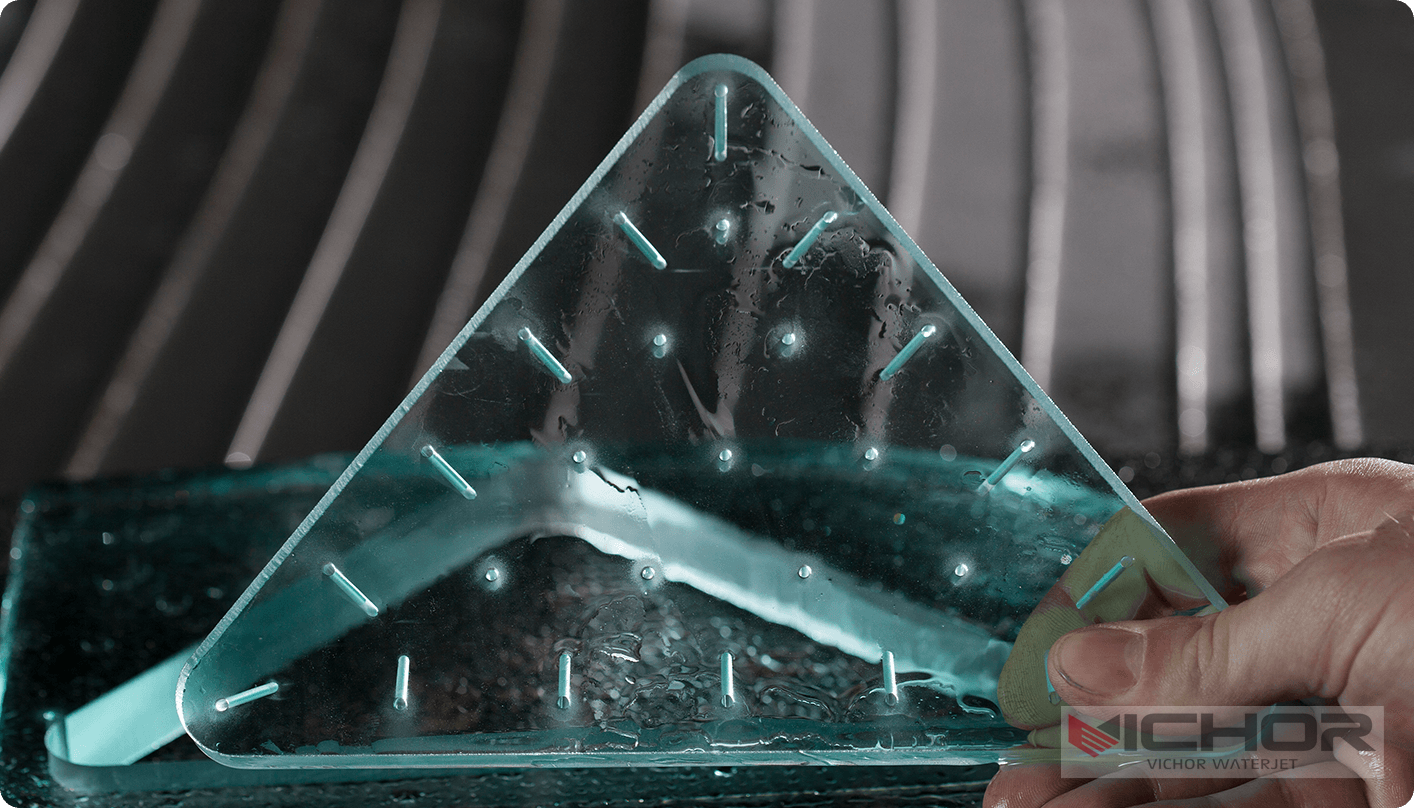
Exploring Hydro Jet Metal Cutting: Precision, Applications, and Common Questions
In the realm of industrial manufacturing and fabrication, innovation constantly pushes the boundaries of what’s possible. One such groundbreaking technology is hydro jet metal cutting. This process, which might sound like something from science fiction, is a highly efficient and precise method for slicing through metal using the immense power of water. But how does it work? What are its advantages, and what challenges might one face? This article dives deep into the world of hydro jet metal cutting, exploring its mechanics, benefits, applications, the cutting process itself, and addressing frequently asked questions. Whether you’re an engineer, a fabricator, or simply curious about modern industrial techniques, understanding this technology reveals a fascinating intersection of nature’s simplicity and engineering brilliance.
What is Hydro Jet Metal Cutting and How Does It Work?
Hydro jet metal cutting, often referred to as waterjet cutting, is a cold-cutting process that utilizes a high-pressure stream of water, often mixed with an abrasive substance, to cut through materials. Unlike thermal cutting methods like laser or plasma, which use heat, hydro jet metal cutting relies on kinetic energy, making it a cold process. This is crucial for materials that are sensitive to high temperatures.
The process begins with a high-pressure pump, which pressurizes water to extreme levels, typically between 60,000 and 90,000 pounds per square inch (PSI). This pressurized water is then forced through a small orifice, usually made of diamond or sapphire, creating a supersonic jet of water. For cutting harder materials like metals, an abrasive material, such as garnet, is introduced into the stream. This abrasive jet acts like a saw, eroding the material along a predetermined path with incredible precision.
The key components of a hydro jet metal cutting system include:
High-Pressure Pump: The heart of the system, generating the necessary water pressure.
Intensifier or Direct Drive Pump: Two common types of pumps used to achieve ultra-high pressure.
Abrasive Delivery System: Feeds abrasive grit into the water stream.
Cutting Head: Contains the orifice and focusing tube (nozzle) that shapes and directs the jet.
CNC Controller: Guides the cutting head along the programmed path for complex and accurate shapes.
This method results in a clean, precise cut without affecting the material’s inherent structure, as there is no Heat-Affected Zone (HAZ).
The Advantages of Using Hydro Jet for Metal Cutting
Why choose hydro jet metal cutting over other methods? The list of benefits is extensive and caters to a wide range of industrial needs.
No Heat-Affected Zone (HAZ): This is arguably the most significant advantage. Since the process is cold, it does not alter the metallurgical properties of the metal. There is no hardening, warping, or residual stress introduced into the material, which is critical for metals that are heat-sensitive, like aluminum or certain tool steels.
Versatility: A single hydro jet metal cutting machine can cut virtually any material. While our focus is metal, the same machine can effortlessly switch to cutting stone, glass, composites, rubber, and plastics simply by turning off the abrasive feed for softer materials. This eliminates the need for multiple dedicated cutting systems.
High Precision and Quality: Waterjet cutting is known for its accuracy, capable of holding tolerances within ±0.005 inches. It produces smooth edges with a fine finish, often eliminating the need for secondary finishing processes. It can also cut complex shapes and intricate details with ease.
Environmentally Friendly: The process is primarily water and sand (garnet abrasive). It does not produce hazardous fumes, gases, or vapors as thermal cutting processes do. The waste material is simply a slurry of water and abrasive mixed with minute particles of the cut material, which is generally non-toxic and can be easily managed.
Minimal Material Waste: The narrow kerf (the width of the cut) of the waterjet stream, often as thin as 0.04 inches, allows for parts to be nested very closely together. This maximizes material usage and significantly reduces waste, leading to cost savings, especially with expensive metals.
Common Applications of Hydro Jet Metal Cutting in Industry
The unique capabilities of hydro jet metal cutting have made it indispensable across numerous sectors. Its ability to handle diverse materials without thermal distortion opens doors to applications where other technologies fail.
Aerospace and Aviation: Used for cutting intricate components from aluminum, titanium, and high-strength alloys. The absence of HAZ is critical for maintaining the structural integrity and fatigue life of aircraft parts.

Automotive Industry: Employed in prototyping and manufacturing parts like interior panels, gaskets, body components, and even brake ducts. It is also used for trimming composite parts.
Architecture and Art: Allows artists and architects to create complex metal sculptures, decorative panels, and signage with a high level of detail and no thermal damage to the finish.
Machine and Tooling: Ideal for cutting tool steel and other hard metals without compromising their temper. It’s used for creating jigs, fixtures, and machine components.
General Fabrication: A workhorse in job shops for its versatility. From cutting stainless steel for food processing equipment to creating parts for agricultural machinery, hydro jet metal cutting is a go-to solution for one-off prototypes and high-volume production runs.
The Step-by-Step Process of a Hydro Jet Cut
Understanding the procedure helps in appreciating the technology’s precision.
Design: The process starts with a CAD (Computer-Aided Design) drawing of the part to be cut.
Programming: The CAD file is converted into a toolpath using CAM (Computer-Aided Manufacturing) software. This code instructs the CNC machine on where to move the cutting head.
Setup: The metal sheet is secured onto the cutting table. The appropriate orifice and focusing tube are installed in the cutting head, and the abrasive hopper is filled.
Piercing: The jet pierces the metal at a designated start point. To avoid splashing, the head may use a special piercing mode or start at the edge of the material.
Cutting: The CNC controller moves the cutting head along the programmed path at a specific speed (feed rate), optimized for the material type and thickness. The high-pressure abrasive jet erodes the metal along this path.
Completion: Once the cut is complete, the water pressure is released. The cut parts are then removed from the supporting “skeleton” of the material.
Frequently Asked Questions About Hydro Jet Metal Cutting
Q1: How thick of a metal can a waterjet cut?
A: Hydro jet metal cutting is capable of cutting metals over 12 inches thick. However, the cutting speed decreases significantly as thickness increases. For very thick materials, a trade-off between speed and precision is considered. Most common industrial applications involve metals between 0.5 inches and 4 inches thick.
Q2: What is the taper in a waterjet cut and can it be eliminated?
A: Taper is a natural phenomenon where the cut is slightly wider at the top than at the bottom. It occurs because the jet loses energy and spreads out as it travels through the material. Modern hydro jet metal cutting systems use advanced software and cutting heads that can dynamically adjust the head’s tilt to compensate for this, producing near-perpendicular edges. This technique is known as “taper compensation” or “5-axis cutting.”
Q3: Is waterjet cutting expensive?
A: The initial investment in a hydro jet metal cutting system is higher than some alternatives. However, the operational costs must be considered. It saves money by reducing material waste (efficient nesting), eliminating secondary finishing steps, and using a single machine for multiple materials. For complex, heat-sensitive, or thick materials, it is often the most cost-effective solution overall.
Q4: How does the cutting speed compare to laser or plasma?
A: For thin sheets of mild steel, laser cutting is generally faster. However, for thicker materials (typically above ½ inch) and for reflective or heat-sensitive metals, hydro jet metal cutting can be more effective and reliable. Plasma is fast but produces a large HAZ and lower edge quality. Waterjet’s advantage is not raw speed, but rather precision, quality, and versatility without thermal damage.
Q5: How is the water and abrasive waste handled?
A: The waste slurry is collected in a catchment tank below the cutting table. The water settles, and the abrasive and metal particles sink to the bottom. The water can be recycled or treated and disposed of according to local regulations. The settled sludge is typically non-hazardous and can be disposed of in a landfill, though it’s always best to check local guidelines. Many facilities use separation systems to recycle the water and collect the abrasive and metal dust for disposal.
Hydro jet metal cutting stands as a testament to engineering ingenuity, harnessing the simple power of water to perform complex industrial tasks with unmatched precision and versatility. Its ability to cut without heat makes it uniquely suited for a vast array of applications, from delicate aerospace components to robust architectural features. While questions about speed and cost are common, the technology’s benefits—especially the elimination of the Heat-Affected Zone and its material versatility—often make it the superior choice. As technology advances, with improvements in pump efficiency, nozzle design, and intelligent software, hydro jet metal cutting will continue to be a vital and evolving tool at the forefront of modern manufacturing.
continue reading



